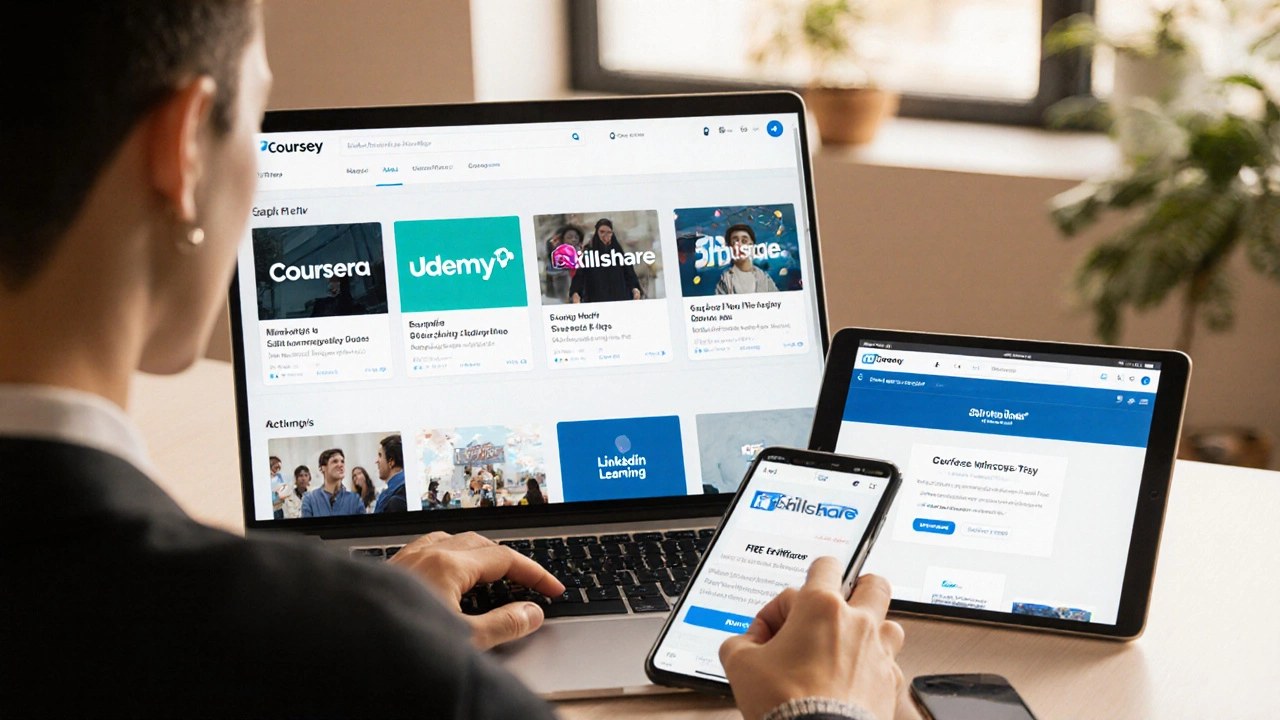Online Course Pricing: How to Make Sense of Costs and Value
When working with online course pricing, the way fees are set for digital learning programs. Also known as course cost, it impacts students, working professionals, and lifelong learners alike. The landscape includes free online courses, zero‑tuition learning options offered by many providers and MOOC platforms, massive open online course providers such as Coursera, edX, and Udacity that blend free content with paid upgrades.
Understanding online course pricing helps you decide whether a free path fits your goals or you need a paid certificate to prove competence. Paid certifications, credentials that usually require a fee and may include assessments or projects often come with industry recognition and can boost hiring prospects. Meanwhile, many platforms adopt subscription models, monthly or yearly payments that unlock unlimited access to a library of courses, letting learners experiment across topics without paying per course.
Cost structures also depend on course length, depth, and the credentials attached. Short skill‑based modules for programming or data analysis may be priced under $50, while full‑stack bootcamps or professional MBA specializations can exceed several thousand dollars. The choice often hinges on the intended outcome: quick upskilling, career transition, or academic advancement. Recognizing how each pricing type aligns with your objectives saves money and time.
Key Factors That Shape Course Costs
First, the delivery format matters. Live‑online classrooms with instructor interaction usually carry higher fees than pre‑recorded video libraries. Second, the presence of accreditation or partnership with universities adds credibility—and cost. Third, supplemental resources such as mentor support, career services, or project reviews are value‑added features that influence the final price tag. Finally, geographic market dynamics play a role; platforms may price differently for Indian learners versus U.S. students, reflecting purchasing power and local demand.
Another angle is employer involvement. Some companies offer tuition reimbursement or sponsor specific courses, effectively reducing out‑of‑pocket expenses for employees. When a course is covered by a corporate learning budget, the perceived price to the learner drops dramatically, making premium programs more accessible. Additionally, scholarships or financial aid programs from platforms themselves can offset costs for eligible candidates.
To compare options, create a simple spreadsheet that lists the course name, provider, format, duration, credential type, and total cost—including hidden fees like certification exams or required software. Rank each entry by the value you expect to gain: salary boost, skill relevance, or personal interest. This systematic approach turns scattered pricing information into actionable insight.
Below you’ll find a curated collection of articles that dive deeper into specific pricing scenarios—free coding resources, MBA specialization costs, rapid‑training career paths, and more. Use them as a toolbox to decide which financial model matches your learning roadmap and career ambitions.
Best Platforms for Learning New Skills in 2025
Compare top e‑learning sites, see pricing, certification and best‑fit recommendations to find the ideal platform for mastering new skills.
